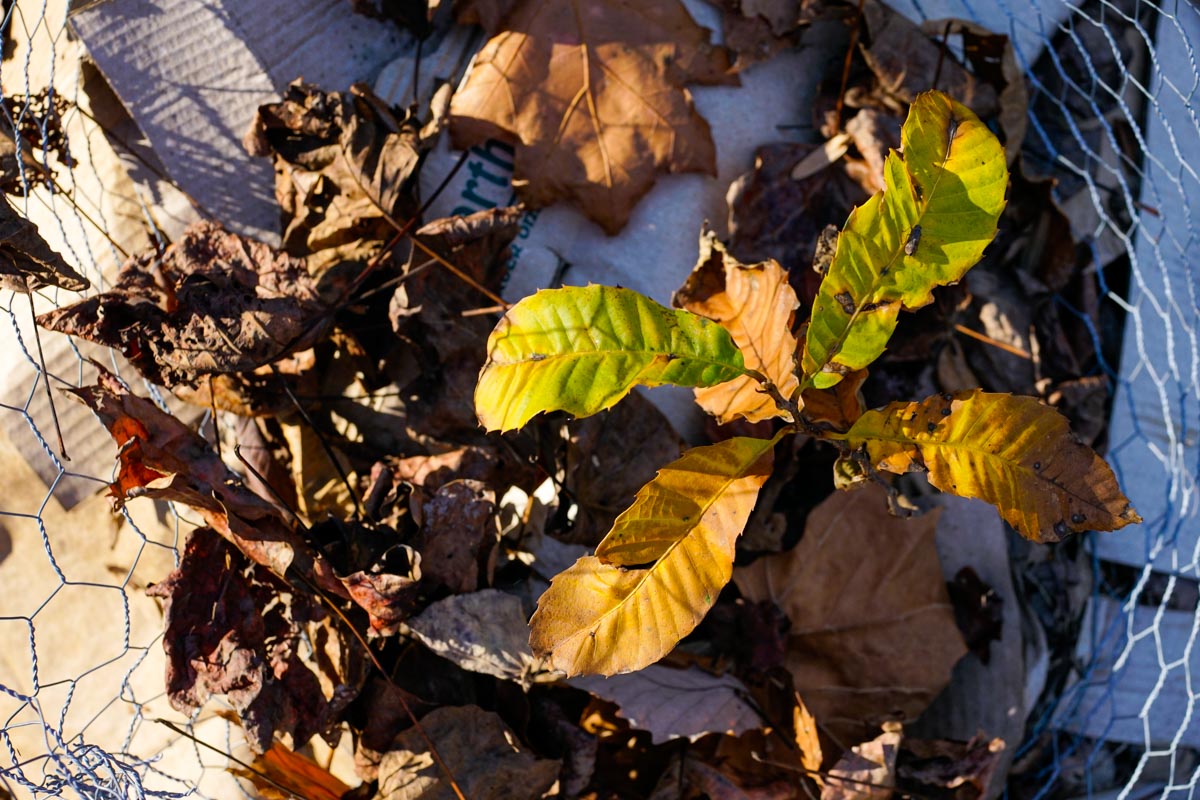The American chestnut was once the dominant tree of forests in the eastern United States. There were around 4 billion trees, important to wildlife and also for lumber, preferred for its high-quality wood for everything from houses to railroad ties and telephone poles. They also provided seasonal chestnuts which were a treat for people. When I was very young, having heard about the demise of chestnut trees, I wondered how I was able to eat delicious chestnuts from street vendors in New York City. I didn’t realize these were not from the same American chestnuts.
Around the turn of the century, a blight was accidentally imported with non-native chestnuts from Asia. Cryphonectria parasitica, the fungus causing all the havoc, was first noticed killing American chestnuts at New York’s Bronx Zoo in 1904. Within 50 years, chestnuts went from being prominent trees to an early succession shrub that dies back to the roots. The fungus can’t compete with microorganisms in the soil, so stump sprouts continue to come up, but few trees survive to produce nuts and therefore future trees.
I planted this chestnut tree almost two months ago, watering it through summer and autumn dry spells as it settled in. I have mulched it with cardboard and leaves to give it a good head start in its race against the many invasives constantly seeding themselves into my yard. I have also protected it with a chicken wire cage. I used these a lot in my first garden in central North Carolina, when deer would eat almost everything I planted. I haven’t used them since, instead trying to choose plants that can survive incessant deer attacks. But I made an exception for this since I want to stack the odds in their favor.
This sapling came from ArcheWild, who are propagating wild chestnuts. These are 3rd generation trees, the first-generation being populations of Castanea dentata that resisted blight and survive in the wild, and the 2nd generation from the ArcheWild orchard trees that survived to produce seed. There are other efforts to bring chestnuts back including GMO trees using almost pure American chestnuts, and other trees crossed with the resistant Chinese chestnuts. The latter is more controversial since there are some who believe trees with the Chinese chestnut genes might become on some level an invasive species.
The five saplings I bought this summer are not guaranteed to survive, but some of their parents continue to thrive and I hope at least one of mine will grow to be a forest giant and contribute to bringing back the original forest. Obviously from the photo this chestnut has a long way to grow. Forests don’t grow overnight, and planting a tree requires patience and optimism. I am hoping in a hundred years this tiny plant is a giant, part of a mature forest that brings delight to generations of wildlife.
